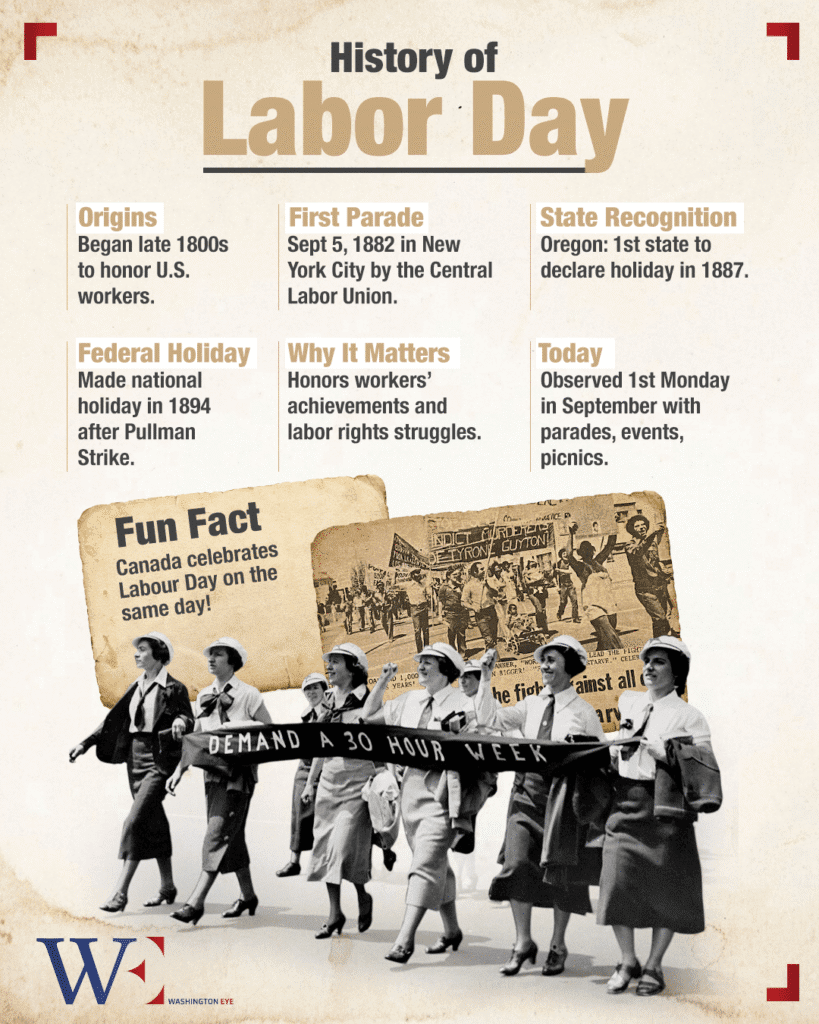Every year on May 1st, countries around the world commemorate Labour Day, also known as International Workers’ Day, to recognize and celebrate the achievements and struggles of the working class. Rooted in the labor union movement’s fight for fair working conditions, Labour Day is more than a public holiday—it is a powerful reminder of the historical sacrifices made by workers to secure the rights many enjoy today.
Labour Day has its roots in the labor movement of the late 19th century in the United States. The most defining moment was the Haymarket Affair in Chicago on May 4, 1886, when a peaceful rally supporting workers striking for an eight-hour workday turned violent after a bomb was thrown at the police. Several people, including police officers and civilians, were killed.
The rally was part of a broader movement, and May 1, 1886, marked the beginning of a nationwide strike demanding an eight-hour workday. The violence and its aftermath sparked global solidarity among workers, and by 1889, the Second International, a federation of socialist and labor parties, declared May 1st as International Workers’ Day to honor those who died in the Haymarket incident and to further the cause of workers’ rights.
Why Labour Day Matters
Labour Day symbolizes the ongoing struggle for better wages, reasonable working hours, safe workplaces, and the right to unionize. It is a day to reflect on the journey of labor reforms and the continuing challenges faced by workers in many parts of the world. Over 2 million people die annually due to work-related accidents and diseases. About 160 million children are engaged in child labor, with nearly 50% involved in hazardous work. Global unemployment in 2024 stood at around 5.2%, with women and youth facing higher joblessness rates than adult males. These figures illustrate that, while progress has been made, the goals of the labor movement are still far from being universally realized.
Though Labour Day is celebrated globally, the customs vary from country to country. In Germany, where May 1st is known as Tag der Arbeit, observes the day with parades, union-led marches, and political rallies. Major cities like Berlin and Hamburg host events focusing on workers’ rights and social justice. In France, Fête du Travail is marked by large-scale demonstrations led by trade unions and political parties. The day also sees the traditional gifting of lily-of-the-valley flowers (muguet) as a symbol of good luck and solidarity. India recognizes May 1st as Antarrashtriya Shramik Diwas. It was first celebrated in 1923 in Chennai. The day is marked with rallies and speeches emphasizing workers’ contributions and ongoing labor issues.
United States does not celebrate Labour Day on May 1st. Instead, Labor Day is observed on the first Monday of September, primarily as a holiday to mark the end of summer. However, May Day remains an important date for labor activists. In China, May Day was once a week-long holiday but has now been reduced to a three-day break. The government organizes award ceremonies for model workers, recognizing their contributions to the economy. In South Africa, May 1st is a public holiday known as Workers’ Day, commemorating the role of trade unions and the labor movement in the struggle against apartheid and for workers’ rights.
Labour Rights in the 21st Century
As the world evolves, so do the demands and challenges of labor. The rise of gig economy jobs, remote work, and automation is reshaping the traditional understanding of employment. A report by McKinsey Global Institute in 2024 revealed that up to 375 million workers worldwide may need to switch occupations or learn new skills by 2030 due to automation. Meanwhile, gig workers often lack the protections and benefits of traditional employees, sparking fresh debates on employment classification and rights.
Moreover, the COVID-19 pandemic exposed vulnerabilities in global labor markets. Millions lost jobs or faced wage cuts, particularly in low-income sectors. Women and migrant workers were disproportionately affected. In response, the ILO has emphasized the importance of a “human-centered approach” to recovery, focusing on decent work, social protection, and inclusive labor markets.
Labour Day is not just a day off from work; it is a tribute to the resilience, unity, and sacrifice of workers across time and geography. It reminds us that every right enjoyed today was won through the courage of those who dared to stand up against exploitation. As challenges evolve in a rapidly changing world, the spirit of Labour Day continues to inspire workers, policymakers, and citizens alike to strive for fairness, dignity, and equality in the world of work.

















